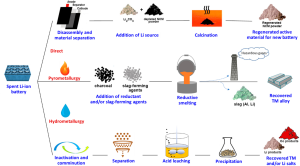The Quest for Clean Energy: LiFePO4 Batteries in Renewable Systems
Introduction: Towards a Sustainable Future
Lithium iron phosphate (LiFePO4) batteries have become a major participant in the global search for clean and sustainable energy solutions, spurring advancements in renewable energy systems. LiFePO4 batteries are essential in facilitating the mass use of renewable energy sources like solar and wind power as the world moves toward a low-carbon future. This exploration delves into the quest for clean energy and the integral role of LiFePO4 batteries in renewable systems, highlighting their benefits, applications, and contributions to a sustainable future.

Understanding LiFePO4 Batteries
LiFePO4 batteries, a type of lithium-ion battery, utilize iron phosphate as the cathode material, offering several advantages over traditional lithium-ion chemistries. These advantages include high thermal stability, enhanced safety, long cycle life, and low cost. LiFePO4 batteries are renowned for their high energy density, fast charging capabilities, and ability to deliver consistent performance over thousands of charge-discharge cycles, making them ideal for renewable energy applications.
Empowering Renewable Energy Systems
- Energy Storage: In renewable energy systems, LiFePO4 batteries play a critical role as energy storage elements. They store surplus energy produced by solar panels or wind turbines during peak production times and release it when demand exceeds supply. LiFePO4 batteries assist overcome the intermittent nature of renewable energy sources and provide a dependable and steady power supply by offering grid-scale energy storage.
- Grid Integration: LiFePO4 batteries offer ancillary services including grid stability, voltage support, and frequency control, which make it easier to integrate renewable energy sources into the system. Through smart grid technologies, LiFePO4 batteries help optimize energy flow, balance supply and demand, and enhance grid reliability and efficiency.
- Off-Grid Applications: In remote or off-grid areas where access to centralized power infrastructure is limited, LiFePO4 batteries enable the deployment of standalone renewable energy systems. Paired with solar panels or wind turbines, LiFePO4 batteries provide reliable off-grid power for remote communities, businesses, and critical facilities, promoting energy independence and resilience.
- Microgrid Resilience: As a backup source of power in case of crises or grid failures, LiFePO4 batteries increase the resilience of microgrid systems. In combination with renewable energy sources and other distributed energy resources, LiFePO4 batteries enable microgrids to operate autonomously and reliably, reducing reliance on centralized power grids and enhancing energy security.
Benefits of LiFePO4 Batteries in Renewable Systems
- Safety and Reliability: LiFePO4 batteries are renowned for their safety and reliability, thanks to their stable chemistry and robust construction. Unlike some other lithium-ion chemistries, LiFePO4 batteries are inherently resistant to thermal runaway, overcharging, and short circuits, making them well-suited for renewable energy applications where safety is paramount.
- Long Cycle Life: Long cycle life is provided by LiFePO4 batteries, which have the capacity to endure thousands of charge-discharge cycles without experiencing appreciable deterioration. This longevity ensures that LiFePO4 batteries can provide reliable energy storage for renewable systems over extended periods, maximizing return on investment and reducing lifecycle costs.
- High Energy Density: The high energy density of LiFePO4 batteries enables them to store a lot of energy in a comparatively small and light container. This compact footprint is advantageous for renewable energy applications where space may be limited, such as rooftop solar installations or off-grid solar systems.
- Fast Charging and Discharging: LiFePO4 batteries exhibit fast charging and discharging rates, enabling rapid response to changes in energy demand and renewable energy generation. This fast response capability enhances the efficiency and flexibility of renewable energy systems, allowing them to adapt quickly to fluctuations in solar irradiance, wind speed, and grid conditions.
Innovation Driving the Transition to Clean Energy
- Advanced Battery Management Systems (BMS): Innovations in battery management systems enhance the performance, efficiency, and safety of LiFePO4 batteries in renewable energy systems. Advanced BMS technologies enable real-time monitoring, control, and optimization of battery operation, ensuring optimal performance, longevity, and reliability.
- Hybrid Energy Storage Systems: Research is being done on hybrid energy storage systems that combine LiFePO4 batteries with other energy storage technologies, like flywheels or supercapacitors, to take use of the complementing qualities of each. These hybrid systems offer enhanced performance, flexibility, and reliability, further optimizing renewable energy integration and grid stability.
- Blockchain and Peer-to-Peer Energy Trading: Blockchain technology and peer-to-peer energy trading platforms enable decentralized energy transactions and grid balancing services, facilitated byLiFePO4 batteries and distributed energy resources. These platforms allow prosumers to sell excess energy generated from renewable sources to neighboring consumers or grid operators, promoting energy self-sufficiency and community resilience.
- AI and Predictive Analytics: Renewable energy systems using LiFePO4 batteries are optimized in terms of administration and operation through the application of artificial intelligence (AI) and predictive analytics. AI algorithms analyze data from renewable energy sources, battery systems, weather forecasts, and grid conditions to optimize energy production, storage, and consumption, maximizing renewable energy utilization and grid efficiency.
Conclusion: Pioneering a Sustainable Energy Transition
In conclusion, the quest for clean energy is propelled forward by the integration of LiFePO4 batteries into renewable energy systems. With their safety, reliability, and long cycle life, LiFePO4 batteries empower the widespread adoption of renewable energy sources such as solar and wind, driving the transition towards a sustainable and resilient energy future. Through innovation in action and strategic deployment of LiFePO4 battery technology, we can harness the transformative power of clean energy, reduce greenhouse gas emissions, and build a more sustainable world for future generations.






